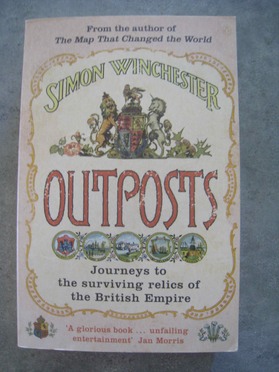Sunday, 30 November 2008

As I read Ferguson’s book I found myself thinking back to an earlier read, Simon Winchester’s Outposts: Journeys to the surviving relics of the British Empire, originally published in 1985 and reissued in a new edition in 2003.
It comes as no surprise that the bits of Empire that remain are the bits that wouldn’t be viable in their own right or which have been retained for other reasons. Winchester attempted to visit them all, and managed to reach most. What he found along the way was, in many cases, slightly disturbing.
In the British Indian Ocean Territory the original inhabitants had been relocated to allow the construction of the U.S. base at Diego Garcia, and there seemed to be a reluctance on the part of the relevant authorities to allow the inhabitants of some of the other colonies to the British homeland.
In the long run, I guess, how you look at things depends on where you’re looking from.
Theroux, looking back from first-hand experience in the last days of Empire, sees most of Africa going to rack and ruin and feels most comfortable in South Africa and Zimbabwe, though one wonders how he’d feel about the latter case if he was making the same journey today,
Ferguson, looking at things from an academic base in New York and Oxford emphasises the positive aspects of the Empire’s legacy while Winchester’s attempt to look at things as they were at ground level leaves the reader (or at least this reader) bemused at the apparent indifference of the British government to the welfare of the people left in their remaining colonial possessions.
On that basis, Theroux and Winchester provide an interesting read. Ferguson, while providing an interesting summary of the colonial process doesn’t seem to be covering too much new territory apart from his attempt to counter recent adverse commentary on colonialism by emphasising the positive aspects of the Imperial legacy.